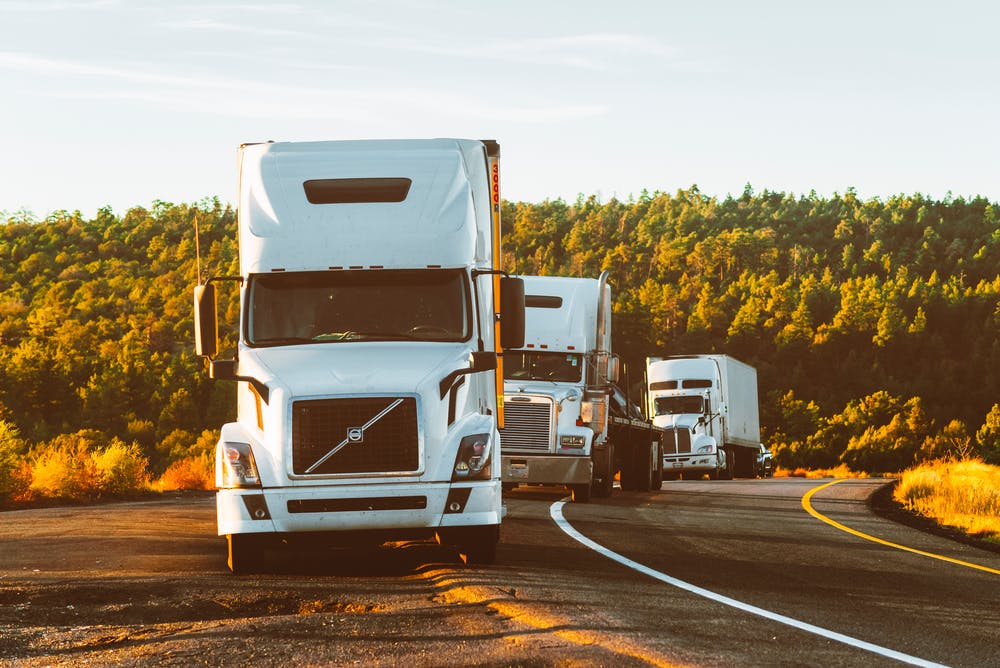In a world where we expect instant doorstep deliveries, we must accept large trucks sharing the road with smaller vehicles. Unfortunately, trucks are much more dangerous to pedestrians and smaller cars in crash incidents. This is true even if the truck driver is faultless. A recent accident highlighted this when a car ran a stop sign, hit a truck, and the driver died.

The tragic accident occurred in St. Louis near Interstate 70 on North Broadway. An intersection failure resulted in a fatal accident between the auto and a semi-truck. The car driver was pronounced dead at the scene while the truck operator had only minor injuries. Truck safety measures need to be advanced to prevent unfortunate incidents like this.
Let’s discuss how a technological intervention could have helped prevent this accident and its fatal consequences.
Collision Avoidance Systems
Collision avoidance systems use a combination of radar, cameras, and sensors to detect imminent collisions. These systems can automatically apply brakes or alert drivers to take corrective action, preventing accidents.
In the automotive industry, deep learning-based monocular vision algorithms are being utilized. The core aim is to enhance forward collision avoidance by estimating time-to-collision (TTC). These systems rely on real-time perception methods to detect potential obstacles and take preventive actions like steering to avoid collisions.
Recent studies have focused on the integration of edge computing, machine learning, and computer vision to improve its reliability. In the instance of the St. Louis semi-truck incident, such a system could have detected the car and applied brakes.
In cases where collisions occur, data from such systems can provide evidence of the events leading up to the accident. Further, it can also aid victims in claiming fair compensation by proving fault and the circumstances of the crash.
Attorneys who handle Fedex delivery truck accidents can explain how this data plays a vital role in establishing liability. They use it to reconstruct the incident accurately and challenge any conflicting accounts from the opposing party.
Lane Departure Warning Systems (LDWS)
Lane departure warning systems alert drivers when their vehicle begins to move out of its lane without signaling. LDWS relies heavily on advanced sensor technologies, primarily cameras that detect lane markings. The efficacy of these sensors is influenced by the retro-reflectivity of road markings, which can degrade due to weather conditions. Studies have shown that higher retro-reflectivity improves the detection capabilities of these systems, especially in adverse weather.
Regulatory bodies across the globe are prioritising the relevance of LDWS. For instance, Australia is introducing new design rules that will mandate LDWS in heavy vehicles by 2026. They aim to reduce the high costs associated with road trauma and enhance overall road safety.
If the semi-truck in the St. Louis case had a lane departure warning system, it could have prevented swerving. This system would have helped if the driver was distracted by the car running the stop sign.
Records from lane departure systems can show if the driver maintained their lane properly. This information is essential to decide liability and support damage claims. In the given instance, such data could be invaluable for a St. Louis truck accident attorney in building a legitimate case.
Electronic Logging Devices (ELDs)
A vehicle’s location, engine hours, and driving time are automatically logged by an ELD. This ensures drivers adhere to hours-of-service regulations, reducing fatigue-related accidents.
Moreover, modern ELDs include accelerometers, GPS, and gyroscopes to offer tracking options for vehicle speed and driving behavior. They can also monitor vehicle diagnostics, engine faults, and give insights into fuel efficiency and maintenance needs. ELDs work by plugging into the vehicle’s on-board diagnostics port, accessing movement and engine-based data.
In the St. Louis case, a car running a stop sign caused the accident. However, the truck driver’s fatigue may have reduced their reaction time, contributing further to the accident. ELDs ensure that drivers are well-rested and alert, possibly preventing such accidents from occurring in the first place.
Additionally, data from ELDs can demonstrate whether a driver is compliant with hours-of-service regulations. The collected insights can further influence the determination of liability and compensation claims.
Advanced Driver Assistance Systems (ADAS)
ADAS is a suite of safety capabilities including adaptive cruise control, blind-spot detection, and automatic emergency braking. These systems enhance driver control and situational awareness. Technologies integrated into this system are categorized based on levels of automation. It ranges from no automation to complete automation, i.e., from 0t (th) phase to 5th phase.
Most current ADAS technologies, such as adaptive cruise control and lane-keeping assistance, fall under Level 2. Here, the system can control the vehicle in specific scenarios. However, the driver must monitor the environment and stay engaged.
If the semi-truck in the St. Louis accident had ADAS, automatic emergency braking might have slowed it down. This response to the sudden appearance of the car could have reduced the impact’s severity. As well as providing insights into speed and braking patterns, ADAS data logs are invaluable for reconstructing the accident scene.
Dash Cams and Telematics
Dash cams record video footage of the road ahead, while telematics systems track vehicle location, speed, and driving behavior. Together, they provide comprehensive data on vehicle operations.
In the accident reported, dash cam footage could have captured the moment the car ran the stop sign. This way, there would have been clear evidence of fault against the car driver. Irrespective of fault, truck accidents are much more fatal than small motor crashes, reports TorHoerman Law. It is, therefore, crucial to walk the extra mile to ensure that trucking accidents can be prevented at all costs.
Frequently Asked Questions
How does weather impact trucking accidents, and can technology help?
Trucking accidents are significantly increased by adverse weather conditions. Rain, snow, ice, and high winds are common culprits that reduce traction, increase stopping distances, and obstruct the driver’s view. Technologies like weather alert systems and traction control help drivers navigate safely in poor weather.
What are the causes of trucking accidents?
Poor maintenance, driver fatigue, and distracted driving are common causes of trucking accidents. Further, weather conditions and traffic violations, like running stop signs, significantly contribute to these accidents. Also, improper loading and cargo shifting can destabilize trucks, leading to accidents. Finally, the presence of unqualified drivers on the road and inadequate training add to the threat of collisions.
What is the importance of documenting injuries after a truck accident?
Documenting injuries is crucial for legal claims. Detailed records support your case and ensure you get the compensation you deserve for your sufferings. Moreover, thorough documentation ensures you receive appropriate medical care. Healthcare providers can use these records to diagnose and treat injuries effectively.
How can victims claim compensation after a trucking accident?
Victims can claim compensation by collecting evidence, and damage documentation, and hiring a seasoned personal injury attorney. Technologies like ELDs and dashcams can provide essential data to support their claims. In cases of severe negligence, punitive damages may be pursued to punish the at-fault party and deter future misconduct.
Integrating technologies in the trucking industry helps prevent accidents and plays a crucial role in ensuring justice for victims. As we move forward, the continued adoption and advancement of these technologies will be pivotal in making our roads safer.

Paula Newton is a business writer, editor and management consultant with extensive experience writing and consulting for both start-ups and long established companies. She has ten years management and leadership experience gained at BSkyB in London and Viva Travel Guides in Quito, Ecuador, giving her a depth of insight into innovation in international business. With an MBA from the University of Hull and many years of experience running her own business consultancy, Paula’s background allows her to connect with a diverse range of clients, including cutting edge technology and web-based start-ups but also multinationals in need of assistance. Paula has played a defining role in shaping organizational strategy for a wide range of different organizations, including for-profit, NGOs and charities. Paula has also served on the Board of Directors for the South American Explorers Club in Quito, Ecuador.










